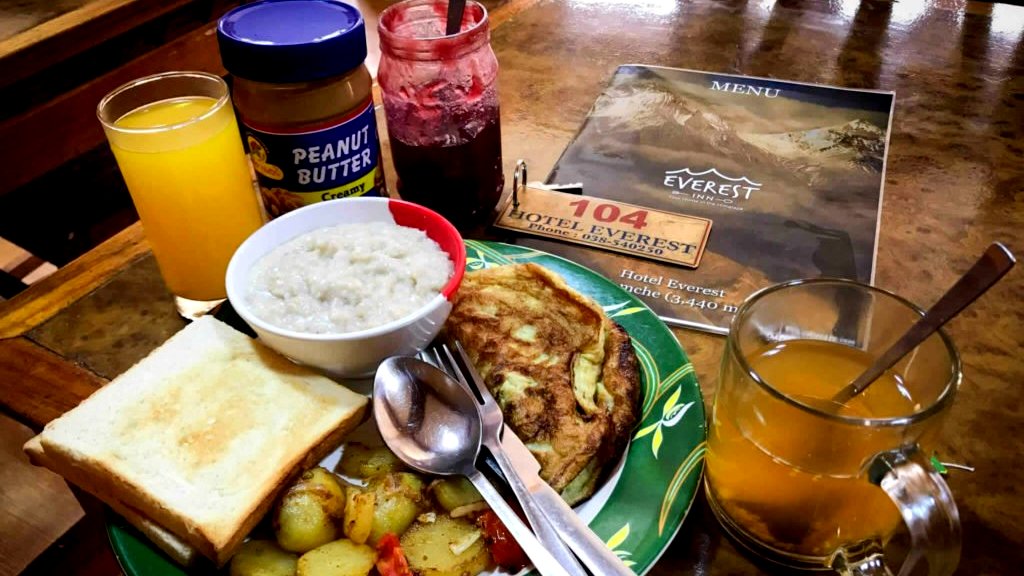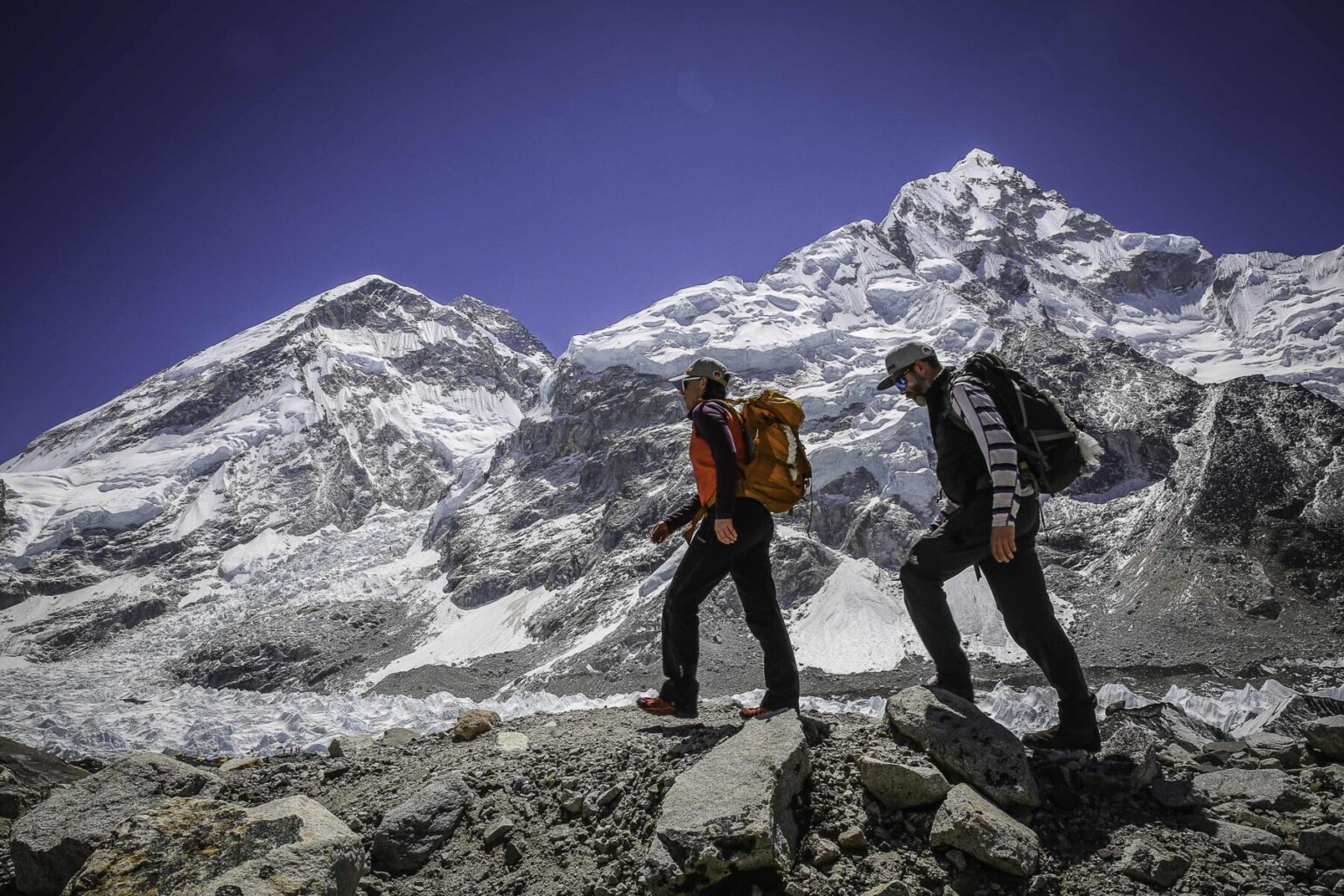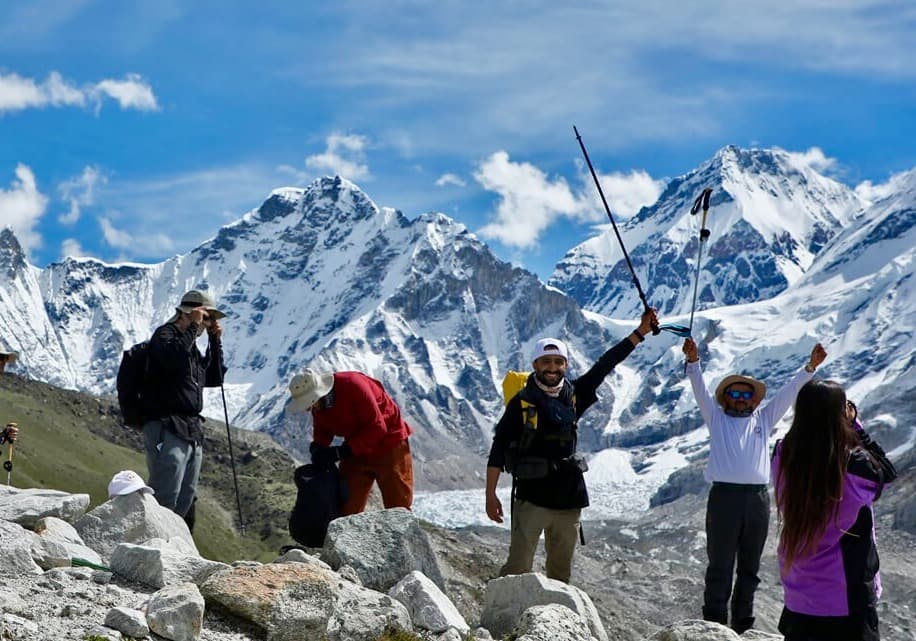Everest Region Trek represents a journey of epic proportions, not just in its physical demands but also in the immense natural beauty and cultural richness it offers. This trek, crafted by Luxury Holidays Nepal Pvt. Ltd., is meticulously planned to balance the rigors of trekking in the world’s highest mountains with periods of rest and acclimatization, ensuring a safe and enjoyable experience for adventurers.
Each day on the trek begins with the stunning backdrop of the Himalayas, where trekkers rise to the crisp, clean air of the mountains. The day’s journey typically starts early, allowing trekkers to make the most of the daylight hours. The trekking route is carefully designed to progress at a steady pace, moving through diverse terrains that range from lush forests to rugged trails. Regular breaks are scheduled to appreciate the breathtaking scenery, including glimpses of majestic peaks like Mount Everest, Lhotse, and Ama Dablam. This phase of the day not only challenges the body but also delights the senses, with ever-changing landscapes and the serenity of nature.
As the day progresses, trekkers enjoy well-deserved rest during the lunch period, often in quaint tea houses that dot the landscape. These moments offer a chance to refuel with delicious local cuisine, providing energy for the afternoon’s trek. The evening brings a sense of accomplishment as trekkers reach their nightly destination, often a comfortable lodge or guesthouse arranged by Luxury Holidays Nepal Pvt. Ltd. Here, they can relax, share experiences with fellow trekkers, and immerse themselves in the local Sherpa culture. The day concludes with a hearty dinner, followed by a restful night’s sleep, essential for rejuvenation and preparation for the next day’s adventure on the magnificent Everest Region Trek.
Here's a breakdown of a typical day during your trek:
Wake up and breakfast
The start of your day on the Everest Region Trek is an early one, typically beginning between 6:00 and 7:00 am. This early rise is essential to make the most of the daylight hours and to embark on the day's journey with the freshness that the crisp mountain air brings. Waking up amidst the serene beauty of the Himalayas, you'll take the time to freshen up and pack your belongings, preparing yourself for the day ahead. This morning routine is not just about physical readiness but also about mentally gearing up for the trek's challenges and delights.

Breakfast served between 7:00 and 8:00 am, is a crucial part of this morning ritual. It's a time to fuel your body with a nutritious and hearty meal, providing the energy needed for the day's trek. The breakfast options are a comforting mix of local and familiar foods, ranging from warm porridge to toast, eggs, and pancakes. This meal is not just about sustenance; it's also a moment to gather your thoughts, plan for the day, and enjoy the camaraderie of fellow trekkers, all while being surrounded by the awe-inspiring landscape of the Everest Region.
Morning trek
After breakfast, you embark on your morning trek, a journey that typically spans 3-4 hours. This segment of the day is when you cover the majority of your distance, progressing steadily through the Everest Region's diverse terrains. The trek's rhythm is set against the backdrop of the world's most magnificent mountains, with each step bringing a new perspective and a deeper appreciation of the Himalayas' grandeur. As you move forward, the trail unfolds a tapestry of breathtaking views, showcasing the sheer beauty and ruggedness of the landscape.
During this trek, you'll experience the richness of local culture and nature. The path leads you through quaint villages, offering glimpses into the lives of the local communities nestled in these high altitudes. These villages are not just waypoints but are integral parts of the journey, enriching your understanding of life in the mountains. Another quintessential feature of this trek is crossing the iconic suspension bridges, and architectural marvels that span across deep gorges and rushing rivers. These bridges are not only vital for the journey but also provide unique vantage points to take in the awe-inspiring scenery surrounding you.
Lunch break
As the clock nears noon, your trekking journey pauses for a well-deserved break at a local teahouse or lodge, carefully selected for its welcoming atmosphere and scenic location. This midday stop is not just a mere pause but a crucial part of the day's experience, offering a chance to rest and refuel. The teahouses in the Everest Region are known for their hospitality and the unique opportunity they provide to immerse in the local culture. Here, in the comfort of the lodge, surrounded by the tranquility of the mountains, you get to unwind and prepare for the afternoon's journey.
Lunch at these teahouses is a delightful affair, featuring a variety of dishes that cater to diverse tastes and dietary needs. The menu often includes options like rice, noodles, and pasta, alongside local specialties such as momos (Nepalese dumplings) or dal bhat (a traditional Nepalese meal of lentil soup and rice). Each dish is prepared with care, offering a taste of the region's culinary heritage. This mealtime is crucial; it's essential to take your time enjoying your meal, allowing your body to rest and adequately digest the food. This break is not just for physical nourishment but also provides a moment to relax, socialize with fellow trekkers, and soak in the serene environment of the Himalayas.
Afternoon trek
After lunch, the journey on the Everest Region Trek resumes for an additional 2-3 hours, depending on the specific day's itinerary set forth by your guide. This post-lunch trek, while still a significant part of the day's journey, is often designed to be shorter and less strenuous compared to the morning session. This approach is strategic, taking into account the body's energy levels and the need for gradual acclimatization to the altitude. The afternoon trek provides an opportunity to continue exploring the stunning landscapes of the region, albeit at a gentler pace, allowing for a more leisurely appreciation of the surroundings.

During this part of the trek, the changing light of the afternoon sun casts new perspectives on the mountains and valleys, offering a different visual experience from the morning. The path may lead through more serene trails, with occasional stops at viewpoints or interesting landmarks. This time of day is perfect for capturing photographs, engaging in thoughtful conversations with fellow trekkers, or simply enjoying the solitude and peace that the Himalayan wilderness offers. The goal of the afternoon session is not just to cover distance but to enrich the overall trekking experience, blending physical activity with moments of reflection and enjoyment.
Arrival at the destination
By late afternoon, usually around 3:00 to 5:00 pm, you will typically reach your day's destination, signaling the completion of that day's segment on the Everest Region Trek. Upon arrival at the lodge, the process of checking in and unpacking offers a transition from the rigors of trekking to a period of relaxation and recovery. This is a time for you to rest and rejuvenate, allowing your body and mind to unwind in the comfort of the lodge, which serves as a serene haven amidst the majestic Himalayan backdrop. This period of relaxation is not only a physical necessity but also a rewarding opportunity to reflect on the day's experiences and prepare for the adventures that await the following day.
Evening activities
Before dinner, there's an opportunity to immerse yourself further in the unique atmosphere of the Everest Region. You might choose to explore the nearby village, a chance to engage with the local culture and observe the daily lives of the residents. Alternatively, interacting with other trekkers at the lodge offers a platform to exchange stories and experiences. For those preferring a more relaxed evening, simply soaking in the stunning mountain views is a tranquil and rewarding option. Many lodges in the region also feature additional amenities, such as a heated common area, providing a cozy and social environment where you can unwind and relax after a day of trekking. This pre-dinner period is a flexible and enjoyable time, allowing for a variety of activities that enhance the overall experience of the trek.
Dinner
Dinner is typically served between 6:00 to 8:00 pm on the Everest Region Trek, providing a crucial opportunity to replenish your energy for the upcoming day's adventures. This meal is not just a routine part of the day but an essential aspect of your trekking experience, offering a variety of nourishing options to suit different dietary preferences. The menu often includes comforting soups, hearty pasta, and rice dishes, along with local specialties that allow you to savor the flavors of the region. This dinner experience is not only about physical nourishment but also a time for social interaction and relaxation, as you enjoy a delicious meal in the company of fellow trekkers and the serene ambiance of the Himalayas.

Bedtime
After dinner, securing a good night's sleep is crucial for recovering from the day's exertions and preparing for the following day's challenges on the Everest Region Trek. Most trekkers adhere to an early bedtime, typically around 9:00 to 10:00 pm, recognizing the importance of rest in such a demanding physical environment. This early retirement to bed is a key part of the trekking routine, ensuring that trekkers are well-rested and ready to tackle the new adventures that each day in the Himalayas brings.
A typical day on the Everest Region Trek encapsulates a profound sense of achievement and reflection. As trekkers settle into their accommodations for the night, there's an overwhelming feeling of gratitude and fulfillment. This is not just for the distance covered or the heights reached but for the myriad experiences and challenges overcome throughout the day. The evening is a time for relaxation and camaraderie, where stories and experiences are shared among fellow trekkers and guides, often beside a warm stove in a cozy tea house. This social aspect is an integral part of the trek, fostering a sense of community and shared purpose among those on the journey.
Dinner, a hearty and satisfying affair, offers more than just nourishment. It is a celebration of the day's accomplishments, a time to replenish energy, and an opportunity to taste local cuisine, which is a blend of Nepalese and international flavors, catering to a diverse array of palates. Post-dinner, many trekkers take the time to journal, read, or simply contemplate the day's journey, often with the backdrop of the Himalayas visible through the windows of the lodge. This quiet time is crucial for mental rest and reflection, as much as the physical rest is for the body.
As the night deepens in the Everest Region, trekkers retreat to their rooms for a well-deserved rest. The comfort of a warm sleeping bag becomes a haven after a long day of trekking. Despite the fatigue, there's often an underlying excitement for what the next day will bring - new landscapes, more breathtaking views, and further immersion into the unique culture of the Himalayas. Thus, a typical day on the Everest Region Trek with Luxury Holidays Nepal Pvt. Ltd. concludes, leaving trekkers with a sense of deep contentment and anticipation for the adventures that lie ahead.
If you need any further information, please contact us by email: at [email protected], Phone: at +977- 985 100 5129 (WhatsApp)




